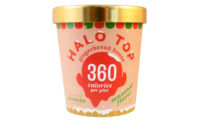
Cream Of The Crop
Donation kicks off a new era at the Penn State Creamery.
The largest university
creamery in the nation, the Penn State Creamery has evolved from a humble
barn in 1865 to a high-tech facility that processes 4.5 million pounds of
milk each year.
Already one of the top dairy education and research
facilities in the nation, the Penn State Creamery got a huge boost to its
future with a $3 million donation from Jeanne and Earl Berkey, former
owners of the Berkey Milk Co. in Somerset, Pa. This allowed for a $16
million renovation of Penn State’s Borland Laboratory to turn it into
the new $48 million Food Science Building, says creamery manager Thomas
Palchak.
Moving into its new home in August 2006, the creamery
occupies the first floor of the Food Science Building, where space is
shared by the renowned creamery store (now more than double its original
size), along with individual areas for processing fluid milk and
manufacturing ice cream, cheese and cultured products.
“The creamery’s dairy plant and sales room
had no additional room to expand, and it was becoming difficult to handle
the ever-increasing demand for ice cream and other dairy products,”
Palchak explains. “The new manufacturing plant required three years
of planning and design work, 18 months of construction and six months of
shakedown before full operational readiness was achieved. It is a
magnificent facility and is now perfectly positioned to continue its role
as an academic support unit in Penn State’s Food Science
Department.”
Raw milk, about half of which comes from the
university’s own 225-cow herd, arrives in tankers at the
creamery’s receiving bay and undergoes lab testing before it’s
processed. Then it’s turned into the many dairy products consumed on
campus or sold in the creamery store and online. The plant is divided into
the milk processing area, ice cream area and cultured products room.
In addition, the creamery accommodates a pilot plant
with modern processing equipment to serve as a laboratory for Food Science
faculty and students conducting research, as well as dairy industry
professionals.
“Food Science students who are pursuing careers
in the dairy industry are afforded many opportunities to help them prepare
for their careers,” Palchak says. “Students can participate in
internships in the dairy plant; they can enroll in the annual ice cream
short course, pasteurizer operator’s and culture products workshops;
and several dairy processing courses taught in the department. Our students
enjoy 100 percent job placement.”
The creamery’s undergraduate enrollment is
currently at 80 students and is on track to reach 150 students in three
years, Palchak reports. There are 56 offers of admission for the next
incoming freshman class, the highest on record; graduate student enrollment
is also up. “Currently, there are 30 students at the master’s
or Ph.D. level, which is expected to grow to 70 students in the next three
years,” he says.
The Penn State Creamery is one of 16 remaining dairy
plants operating on university campuses throughout the United States,
including one at the U.S. Naval Academy in Annapolis, Md.
“We are excited about our new dairy plant and
sales room in particular, and our Food Science Program in general,”
Palchak says. “Department head Dr. John Floros was recently elected
president of the Institute of Food Technologists and has brought added
visibility to the national and international stature of food science at
Penn State.”
Additional photos can be viewed at www.dairyfield.com.
For more information, visit www.creamery.psu.edu
$OMN_arttitle="Cream Of The Crop";?>
$OMN_artauthor="";?>
